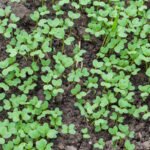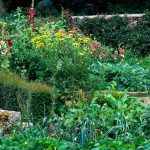Are you interested in growing your own vegetables but don’t have a lot of outdoor space? Indoor vegetable gardening for a small home may be the perfect solution for you. With the right knowledge and resources, you can enjoy the benefits of fresh, homegrown produce right from the comfort of your own home. In this article, we will explore the numerous benefits of indoor vegetable gardening, as well as provide tips and tricks for getting started.
One of the biggest advantages of indoor vegetable gardening is the ability to grow your own food even if you have limited outdoor space. Whether you live in an apartment or a small house with little to no garden area, indoor gardening allows you to utilize whatever space is available to you. In addition, having an indoor garden means that you can have access to fresh, organic produce all year round, regardless of the weather outside.
Not only does indoor vegetable gardening offer practical benefits, but it can also be a therapeutic and rewarding hobby. Tending to your plants and watching them grow can bring a sense of satisfaction and joy.
Plus, there’s nothing quite like the taste of freshly harvested vegetables that you’ve nurtured from seedlings. If you’ve been wanting to try your hand at gardening but thought it wasn’t possible due to a lack of outdoor space, indoor vegetable gardening may just be the perfect solution for you.
Choosing the Right Vegetables for Indoor Gardening
When it comes to indoor vegetable gardening for a small home, choosing the right vegetables is crucial for a successful harvest. Not all vegetables thrive in indoor settings, so it’s important to select varieties that are well-suited for container growing and limited space. Here are some great options for indoor vegetable gardening:
- Herbs: Many herbs like basil, mint, parsley, and oregano are perfect for indoor gardening. They don’t require a lot of space and can be grown on windowsills or in small pots.
- Leafy greens: Vegetables like lettuce, spinach, and kale can also do well indoors. They don’t need as much light as other plants and can be harvested repeatedly for fresh salads.
- Tomatoes: Certain dwarf or cherry tomato varieties can be grown in containers indoors. With proper support and lighting, they can produce a bountiful supply of delicious tomatoes.
It’s essential to consider the needs of each vegetable before deciding what to grow indoors. Some plants may require more light or space than others, so research each variety to ensure it will thrive in your indoor garden.
In addition to these options, there are many more vegetables that can be successfully grown indoors with the right care and attention. Ultimately, choosing the right vegetables for your indoor garden will depend on your preferences, available space, and commitment to maintenance. By selecting suitable varieties, you’ll set yourself up for a rewarding indoor vegetable gardening experience in your small home.
Setting Up the Perfect Indoor Garden Space
- Location: Choose a well-lit area in your home that receives adequate sunlight, preferably near a south-facing window. If direct sunlight is limited, consider using grow lights to supplement natural light for your plants.
- Air circulation: Good air circulation is important for preventing mold and disease in your indoor garden. Consider placing a small fan in the room to keep the air moving and prevent stagnant moisture around your plants.
- Temperature and humidity: Most vegetables thrive in temperatures between 65-75°F (18-24°C) with moderate humidity. Keep an eye on the temperature and humidity levels in your indoor garden space to ensure optimal growing conditions for your vegetables.
- Space and layout: Choose containers that fit well in your designated indoor garden space and allow for proper spacing between plants. Consider using shelving or hanging planters to maximize vertical space if you have limited floor space.
Once you’ve set up the perfect indoor garden space, you’ll be well on your way to enjoying a thriving indoor vegetable garden right in the comfort of your small home. With the right location, air circulation, temperature, humidity, and layout, you’ll create an ideal environment for your vegetable plants to grow and thrive.
Tips for Proper Lighting and Watering
When it comes to indoor vegetable gardening for a small home, providing the right lighting and watering is essential for the success of your garden. Without access to natural sunlight, artificial lighting becomes crucial for the growth of your vegetables. Additionally, proper watering techniques are vital to keep your plants healthy and thriving. Below are some tips to ensure that your indoor vegetable garden gets the best possible conditions for lighting and watering.
Lighting
One of the most important aspects of indoor vegetable gardening is providing adequate light for your plants. Since natural sunlight may not be readily available in your home, you will need to invest in artificial grow lights. LED grow lights are an excellent option for providing the full spectrum of light that plants need for photosynthesis. Positioning the lights at the appropriate distance from your plants and adjusting their schedule to mimic sunlight cycles will help promote healthy growth.
Watering
Proper watering is crucial for maintaining a thriving indoor vegetable garden. Overwatering can lead to root rot, while underwatering can cause wilting and stunted growth. It’s important to water your plants consistently, ensuring that the soil remains moist but not waterlogged. One effective method is bottom-watering, where you place your plant containers in a shallow tray of water and allow them to soak up moisture from below. This helps prevent overwatering and encourages deep root growth.
Hydroponic Systems
For those looking to take their indoor vegetable gardening to another level, consider setting up a hydroponic system. Hydroponics uses nutrient-rich water as a growing medium instead of soil, allowing for more controlled growth conditions. There are various types of hydroponic systems available, such as the Kratky method or NFT (nutrient film technique), which can be customized to fit into small spaces within your home.
By understanding and implementing proper lighting and watering techniques, you can create an optimal environment for your indoor vegetable garden, ensuring that your plants receive the care they need to flourish despite limited space within a small home setting.
Container Options for Indoor Vegetable Gardening
When it comes to indoor vegetable gardening for a small home, choosing the right containers is essential for successful growth. The options for containers are plentiful and can be tailored to fit any size or aesthetic. Whether you have limited space and need to maximize every inch, or you simply want to add a touch of greenery to your living space, it’s important to consider the various container options available.
Choosing the Right Containers
One of the most popular container options for indoor vegetable gardening is using pots and planters. These come in a variety of sizes, shapes, and materials, allowing you to customize your garden to your space and style preferences. Hanging baskets are another great option, especially for vining vegetables such as cherry tomatoes or peas. For those with even less space, vertical gardens and wall-mounted planters are excellent choices that can utilize wall space instead of floor space.
Hydroponic Systems
If you are looking for a more advanced and modern approach to indoor vegetable gardening, hydroponic systems may be the perfect fit for your small home. These systems allow plants to grow in nutrient-rich water without needing soil. They take up minimal space and can often be customized into compact designs that are perfect for small homes.
Self-Watering Pots
For those who lead busy lives or may not have an easy time remembering to water their plants regularly, self-watering pots could be a game-changer. These containers have a built-in reservoir that allows the plants to draw water as they need it, making them an ideal option for a low-maintenance indoor vegetable garden in a small home.
By carefully considering these various container options, anyone can enjoy the benefits of growing their own vegetables indoors, regardless of space limitations or experience level. Taking the time to select the right containers will set you on the path toward successful indoor vegetable gardening.
Maintaining a Healthy Indoor Garden
When it comes to indoor vegetable gardening for a small home, maintaining a healthy garden is crucial for the success of your plants. One of the key aspects of this is pest control and fertilization. With the limited space available in small homes, it’s important to keep your plants strong and healthy to maximize your harvest.
Pest control is essential when it comes to indoor gardening. Common pests that can affect indoor vegetable plants include aphids, spider mites, and whiteflies. To control these pests, consider using natural remedies such as neem oil or insecticidal soap. These are safe options that won’t harm your plants or the environment. Regularly inspecting your plants for any signs of pest infestation is also important so that you can address any issues early on.
Fertilization is another important factor in maintaining a healthy indoor garden. Since container-grown plants have limited access to nutrients in the soil, it’s crucial to provide them with proper fertilization. Consider using organic fertilizers that are specifically formulated for vegetables.
Be mindful not to over-fertilize as this can lead to nutrient imbalances and damage the roots of your plants. Following the recommended dosage on the fertilizer packaging will help ensure that you are providing the right amount of nutrients for your indoor vegetable garden.
By implementing effective pest control methods and providing proper fertilization, you can maintain a healthy indoor vegetable garden in your small home and enjoy a bountiful harvest of fresh produce throughout the year. With careful attention to these aspects, you can ensure that your plants thrive and continue to provide you with an abundance of homegrown vegetables.
Harvesting and Enjoying the Fruits of Your Labor
Once you have carefully nurtured your indoor vegetable garden, it’s time to reap the rewards of your hard work. Harvesting your homegrown vegetables is not only gratifying but also ensures that you are picking them at their peak freshness and flavor. When it comes to indoor vegetable gardening for a small home, the joy of harvesting and enjoying your own produce is unparalleled.
Before harvesting, it’s important to know when each vegetable is ready to be picked. Different vegetables have different signs that indicate they are ripe for harvesting. For example, tomatoes should be picked when they are fully colored and slightly soft to the touch, while leafy greens can be harvested when they reach a size suitable for consumption. Researching the specific indicators for each type of vegetable will help you determine the best time for harvesting.
After you have successfully harvested your vegetables, it’s time to savor the fruits of your labor. There is something incredibly satisfying about preparing and enjoying meals with ingredients grown in your own home.
Whether it’s incorporating fresh herbs into your cooking or creating a salad with freshly picked greens, the taste and quality of homegrown produce speak for themselves. Indoor vegetable gardening for a small home allows you to have an abundance of fresh, organic vegetables right at your fingertips.
Lastly, don’t forget to share the fruits of your labor with friends and family. Not only does this allow you to spread the joy of indoor gardening, but it also gives others a chance to appreciate the delicious flavors of homegrown vegetables.
| Harvesting Tips | Enjoying Your Produce |
|---|---|
| Research when each vegetable is ready to be harvested | Incorporate fresh herbs into your cooking |
| Handle vegetables carefully when harvesting to avoid damage | Create meals with freshly picked produce |
| Share your harvest with friends and family | Savor the delicious flavors of homegrown vegetables |
Troubleshooting Common Issues in Indoor Vegetable Gardening
One common issue that indoor vegetable gardeners may encounter is the lack of proper ventilation. Since indoor spaces have less air circulation compared to outdoor gardens, it is crucial to ensure that your plants are getting enough fresh air.
Without good ventilation, plants may be more susceptible to diseases and pests, and the overall growth and health of the vegetables could be compromised. To address this issue, consider adding a small fan or opening windows when weather permits to improve air flow within your indoor garden.
Another issue that may arise in indoor vegetable gardening is overwatering or underwatering. It can be tricky to find the right balance when it comes to watering your plants, especially in a small indoor space where there may be limited drainage.
Overwatering can lead to root rot and other fungal diseases, while underwatering can result in wilting and stunted growth. To troubleshoot this issue, use a moisture meter to determine when your plants actually need water and ensure that your containers have proper drainage holes to prevent waterlogging.
One more common problem in indoor vegetable gardening is inadequate lighting. Insufficient light can cause leggy growth, poor fruit production, and overall weak and unhealthy plants. To address this issue, consider supplementing natural light with grow lights specifically designed for indoor plants. Place the lights close enough to the plants without causing burning or overheating, and ensure that they are on for the appropriate amount of time each day.
| Common Issue | Troubleshooting Tip |
|---|---|
| Lack of proper ventilation | Add a small fan or open windows for air flow |
| Overwatering or underwatering | Use a moisture meter and ensure proper drainage |
| Inadequate lighting | Supplement natural light with grow lights |
Conclusion
In conclusion, indoor vegetable gardening for a small home offers numerous benefits, from providing access to fresh produce year-round to serving as a rewarding and enjoyable hobby. It allows individuals with limited outdoor space the opportunity to cultivate their own food, contributing to a sustainable lifestyle. The process of nurturing plants and watching them grow can also be therapeutic and fulfilling, adding an element of peace and tranquility to any home.
Choosing the right vegetables for indoor gardening is crucial, as not all plants thrive in an indoor environment. However, with careful selection and proper care, individuals can enjoy a wide variety of homegrown produce, from leafy greens to herbs and even some fruits. Creating the perfect indoor garden space is essential for success, and this may involve selecting appropriate containers, positioning them in well-lit areas, and ensuring they receive adequate water and nutrients.
Maintaining a healthy indoor garden involves diligent pest control measures and regular fertilization. By addressing potential issues early on and implementing proper care techniques, gardeners can ensure the success of their indoor vegetable gardening endeavors.
With the right knowledge and dedication, individuals can savor the joy and satisfaction of growing their own food right in the comfort of their small homes. So if you are looking to bring nature indoors or simply want to have access to fresh produce all year round, consider starting your own indoor vegetable garden-you won’t regret it.
Frequently Asked Questions
How Do You Make a Small Indoor Vegetable Garden?
To make a small indoor vegetable garden, start by choosing vegetables that thrive indoors, such as lettuce, spinach, tomatoes, and peppers. Use containers with drainage holes, fill them with potting soil, and place them in a sunny spot. Water the plants regularly and ensure they have proper ventilation.
Can I Grow Vegetables Indoors Year Round?
Yes, you can grow vegetables indoors year round with the right conditions. Indoor gardening allows for control over temperature, light exposure, and other variables that affect plant growth. With proper care and attention to their specific needs, vegetables can be grown indoors throughout the year.
What Vegetable Gardens Grow in Small Spaces?
Many vegetables are suitable for growing in small spaces. Salad greens like lettuce and arugula are ideal for compact areas and grow quickly. Herbs such as basil, parsley, and chives also thrive in small gardens. Additionally, cherry tomatoes and dwarf varieties of peppers are great options for small-space vegetable gardens.

If you’re looking to get into vegetable gardening, or are just looking for some tips on how to make your current garden better, then you’ve come to the right place! My name is Ethel and I have been gardening for years. In this blog, I’m going to share with you some of my best tips on how to create a successful vegetable garden.





